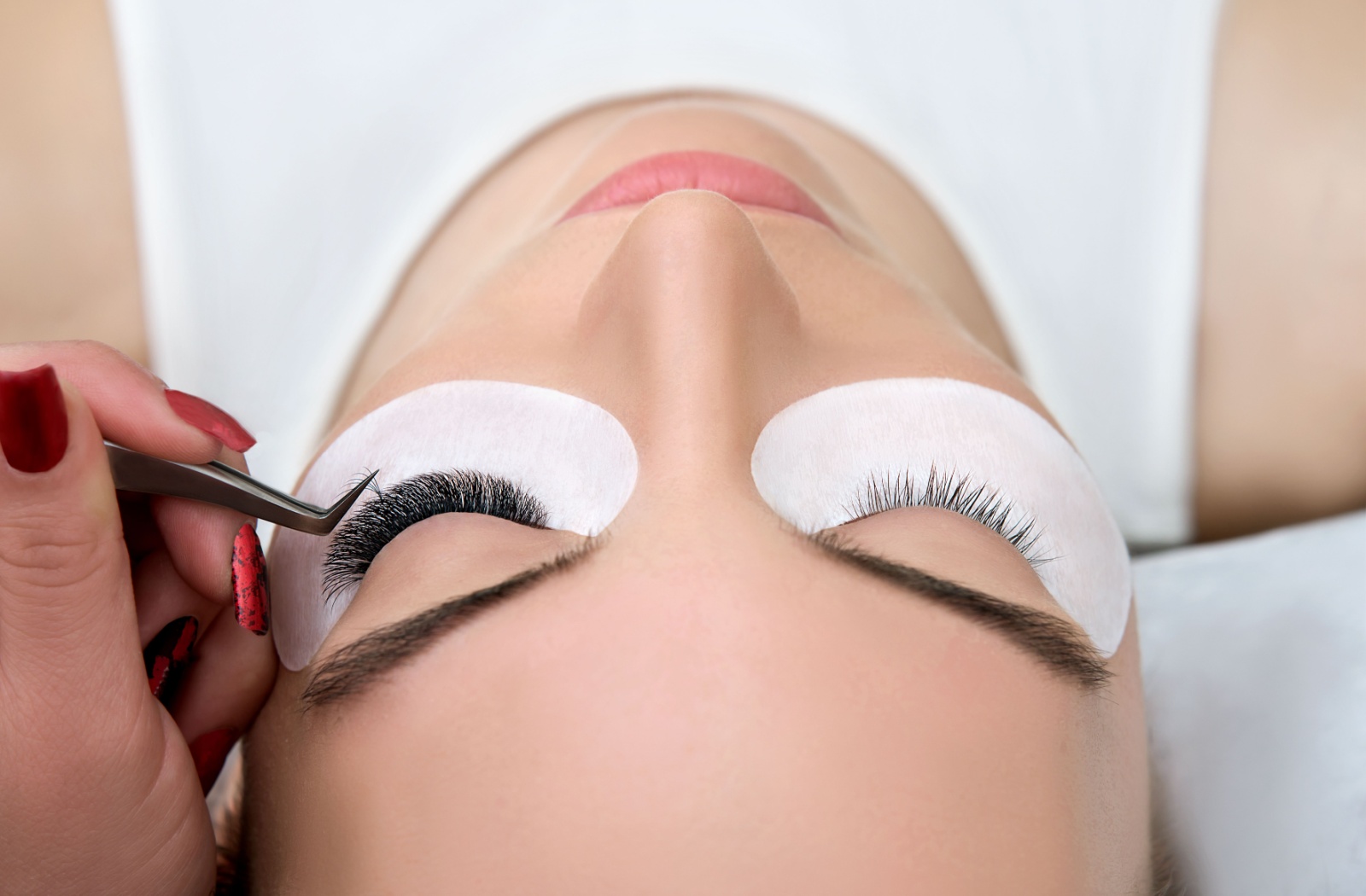Early Eye Care Helps Kids Advance
It’s never too early to start thinking about health. As caregivers, you think about your children’s health all the time. You provide nutritious food, teach them about hygiene, and ensure they are hitting developmental milestones like walking, talking, and reading at their grade level.
Eye care should be part of their robust health routine. Children’s eyes help them to learn and take in the world around them. Part of setting them up for success in the future is giving them the tools to do their best. Be sure their eyesight and visual health are up to the task.
We see children of all ages and can help with a variety of children’s eye conditions.

How Often Should Children Have an Eye Exam?
We follow the Canadian Association of Optometrists recommended guidelines for children’s eye exam frequency. We suggest that children have their first comprehensive eye exam shortly after they are 6 months old.
An early eye exam allows us to establish a baseline for their visual health. We will make sure they are progressing in the development of visual skills. As they continue to grow, book an appointment for your child again when they are between the ages of 2 and 5. An eye exam at this time prepares them for starting preschool. They’ll need to see the board and the words on the page as best they can!
Once kids turn 6, they should have an eye exam every year until they reach adulthood. Annual exams are important because children’s visual systems continue to develop until they are adults. If they have refractive errors or vision conditions, we may recommend more frequent exams.
It’s never too early to start setting them up for success.
Signs Your Child May Need Glasses
Kids don’t always have the right words or life experience to tell you that something is wrong. When it comes to their eyes, they may have a vision condition and not even know it. Here are some important tell-tale signs that your child may need a visit to the optometrist:
- Squinting
- Eye rubbing
- Tilting the head
- Covering one eye
Don’t rely on a simple vision screening, the kind often provided at schools, to determine if your child has good visual skills. While a screening may catch some severe refractive errors, studies show that these simple screenings miss one-third of vision conditions.
There is no substitute for a comprehensive eye examination performed by a qualified optometrist.
Eye Care & Learning
The majority of children’s learning takes place through their vision. Using their eyes, children take in the world around them and make sense of information. If visual skills are not developing correctly, children may struggle in school, or have difficulty making social connections.
Everything from playground interaction to sports and copying information from the board depend on healthy vision. If vision problems go untreated, children may experience:
- Frustration at school
- Negative self-image
- Underachievement
- Behaviour problems
- Slow learning
During a comprehensive eye exam, an optometrist will assess your child’s vision and eye health. You will be kept informed every step of the way, and we will review any findings with you. We will provide advice for the next steps, whether that be vision therapy or corrective lenses for myopia control.
Common Vision Issues in Children
Children are at risk of vision conditions if there is a family history of similar issues. Childhood diseases like high fevers and viruses also increase their risk, as do complications during pregnancy or birth.
All children, regardless of risk factors, should have their eyes assessed to detect any signs of these common vision conditions:
Myopia (Nearsightedness)
Myopia (nearsightedness) usually begins between the ages of 8 and 12. It is a progressive condition that gets worse until vision stabilizes in adulthood. If allowed to progress, myopia can increase the risk of more serious conditions later on in life.
Eye exams are imperative for detecting myopia, correcting vision, and slowing the condition’s progression. To learn more about myopia, please visit our myopia control page.
Strabismus (Crossed Eyes)
Strabismus is a muscle condition that causes crossed eyes. It usually develops before the age of 6 and cannot simply be outgrown. It requires treatment to get the eye muscles to work together again.
Sometimes, strabismus is visually evident as one or both eyes may turn in, out, up, or down. A slight wandering of the eyes may be the first sign of this condition.
Vision therapy or corrective lenses are common treatment options.
Amblyopia (Lazy Eye)
Amblyopia, also known as a lazy eye, occurs when there is a large difference in prescription between the eyes. Over time, the connection between the brain and the affected eye decreases, as one eye consistently provides poor vision.
This condition can lead to blindness if not addressed properly in children. However, when detected and treated early, the outcomes are very good. Vision therapy is one effective method of treatment.
Start Eye Care Early
Set them up for a lifetime of healthy vision by booking their eye appointment today. We can’t wait to meet you and get to know your family.
OUR LOCATION
Visit Advance Eye Care Center in Regina, for all your eye care needs. We offer a number of services, including:
- Adult & Senior Eye Exams
- Children’s Eye Exams
- Diabetic Eye Exams
- Dry Eye Therapy
- Eye Disease Diagnosis & Management
- Trigeminal Dysphoria Treatment
- And more!
Interested in our services? Book an appointment below.
AECC Regina
- 3617B Pasqua Street
- Regina, SK S4S 6W8
Hours of Operation
- Monday: 8:00 AM – 5:00 PM
- Tuesday: 8:00 AM – 5:00 PM
- Wednesday: 8:00 AM – 5:00 PM
- Thursday: 8:00 AM – 8:00 PM
- Friday: 8:00 AM – 5:00 PM
- Saturday: 8:00 AM – 1:00 PM
- Sunday: Closed
*in July and August we are closed on Saturdays and open 8:00 AM – 5:00 PM on Thursdays
Our Brands



See Our Google Reviews
Our Blog
Blepharitis from Eyelash Extensions: Signs It’s Time to See Your Eye Doctor
Eye Care, Eye Conditions & TreatmentsEyelash extensions are a popular beauty trend, offering fuller, longer lashes without daily mascara application. But as stunning as they look, they can sometimes lead to an uncomfortable condition known as blepharitis. If you’ve noticed redness, irritation, or crusting around your eyelash line after getting extensions, despite proper care, it’s time to see your eye […]
Eye Exam Regina: What to Expect
Eye Exams, Eye HealthMaintaining healthy vision is a crucial part of overall well-being. Yet, eye exams are often overlooked until something feels wrong. Regular eye exams help detect early signs of vision issues and identify health conditions such as diabetes, glaucoma, and even hypertension. Some common tests you can expect during an eye exam in Regina include: There […]
Myopia Control Lenses: How They Work & Why They’re Effective for Slowing Nearsightedness
Children’s Eye Care, Contact Lenses, MyopiaMyopia, commonly known as nearsightedness, is one of the most widespread vision concerns among school-aged children. While glasses or contact lenses can provide clear vision, they don’t prevent the condition from worsening over time. That’s where myopia control lenses come in. Myopia control lenses work by correcting blurred vision while gently defocusing peripheral vision, which […]
Blepharitis from Eyelash Extensions: Signs It’s Time to See Your Eye Doctor

Eyelash extensions are a popular beauty trend, offering fuller, longer lashes without daily mascara application. But as stunning as they look, they can sometimes lead to an uncomfortable condition known as blepharitis. If you’ve noticed redness, irritation, or crusting around your eyelash line after getting extensions, despite proper care, it’s time to see your eye […]
Eye Exam Regina: What to Expect

Maintaining healthy vision is a crucial part of overall well-being. Yet, eye exams are often overlooked until something feels wrong. Regular eye exams help detect early signs of vision issues and identify health conditions such as diabetes, glaucoma, and even hypertension. Some common tests you can expect during an eye exam in Regina include: There […]
Myopia Control Lenses: How They Work & Why They’re Effective for Slowing Nearsightedness

Myopia, commonly known as nearsightedness, is one of the most widespread vision concerns among school-aged children. While glasses or contact lenses can provide clear vision, they don’t prevent the condition from worsening over time. That’s where myopia control lenses come in. Myopia control lenses work by correcting blurred vision while gently defocusing peripheral vision, which […]


